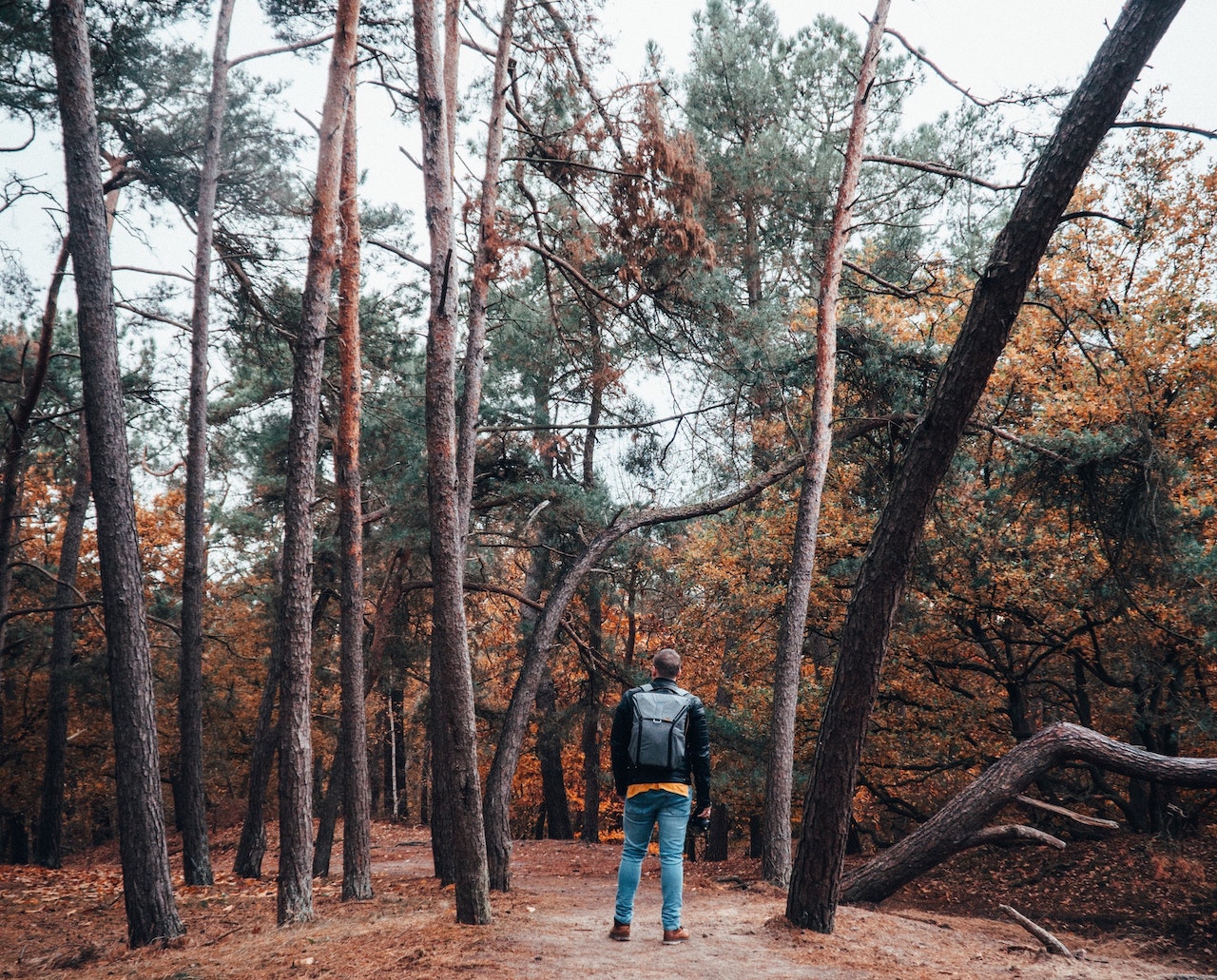They is alot to learn from navigating in nature and the nature of navigation.
Navigating in Nature
I recently discovered the work of master outdoorsman, expert natural navigator, and global adventurer, Tristan Gooley.[1] Maybe you are much more savvy in the woods than I am, but for me, I was fascinated.
Turns out that there are clues to navigating in nature.
Here’s some examples:
- Did you know that the heart of a tree stump is often not at the centre? It is often off-centre towards the sun.
2. Did you know about the “tick effect” on trees? One side of the tree grows upwards, and branches on the other side grows sidewards. In the northern hemisphere, the branches are often pointing towards the southern sky i.e., sun.
3. Did you know that birds can tell you about the weather? Birds typically face the wind so as to not raffle their feathers. If they suddenly change direction in the day, there’s a chance of a storm. (Listen to Gooley’s interview here).
Nature of Navigation
Even though I’ve lived in Western Australia for more than 11 years, my knowledge pales in comparison to a 12 year-old-boy that I used to do outreach work with. He knew where the skatepark was, where the mall was, and even when we were hiking in the trails, he knew the way! “Turn left here, Daryl.” He was my navigator.
Unless it is the route from home to my practice–which is a straight road–I find myself overly-reliant on google maps. (For more trivialities on me getting losing my bearings in the army, see this blogpost).
The thing is, unless you stay in bed, we are all navigators. Since discovering Tristan Gooley’s work, I’m now playing a game with myself to see if I got my bearings of where’s north (Check the compass post-hoc).
As a consequence of this ongoing experiments with navigation, I found myself slightly more aware of my surroundings. I’m noticing a little bit more. Strangely, a little bit more “grounded” even. (A few days ago, my wife asked if I needed Google maps while I was driving. I said no thank you. My wife gave me a suspicious look).
More fundamentally, I can see myself slowly changing my beliefs that “I’m no good with direction.”
From Meanderings to Directionality
What has this got to do with professional development?
One of the biggest challenges that practitioners face is not knowing what to work on that would have an impact on actually improving their work.

Most of us pick trainings, workshops and clinical supervisors that appeal to our beliefs. This makes perfect sense. After all, why adopt an approach that isn’t cogent to your worldview? Besides, the body of evidence is clear that the contribution of “who” the therapist is (5-9%) matters more than the actual “what” treatment modality that is utilised (1%).
However, figuring out where you actually are in order to figure out your growth edge, or what Leo Vygotsky calls “the zone of proximal development”[2] is such a crucial professional development navigation skill. This requires depth-field perception of not just working on the “stuck” cases that you are facing, but also figuring out how you are performing at a wholistic level.
The key is not to go someone else’s way, you need figure out and “go your own way.” (Hum the chorus of Fleetwood Mac’s tune). There is no map for this, but they is a way. There is no “formula,” but there is a shape and form when we can recognise the patterns from our clinical intuition paired with actual clinical data. All of this converges to help us figure out our sense of direction.
In our book Better Results, we provided a guide for those who are wanting to over-come plateaus.
Scott Miller and I now offer ourselves as “tour guides” for your professional journey. In the in-depth Deliberate Practice web-based workshop, we will walk you through the “Why, the What, and the How” of using deliberate practice principles to improve your effectiveness, as well as diving into the weeds of practical “troubleshooting” territories.
Registration for the 3rd cohort closes Friday, 13th of August 2021.
We kick-off this round on 16th of Aug, 2021. It’s a life-time access to the content, not a subscription-based model. We will “drip” to you in your inbox the content every MONDAYS and FRIDAYS for close to 3 months. That said, this is completely self-paced – you get to revisit at any time, and it’s a LIFETIME ACCESS! Besides the content, you’d also get to be engaged with the community.
We hope you will join us.
~~~
Navigation Redux
In one of his talks, Tristan Gooley advices his audience to ask themselves one thing when there are moving around in this world:
Which way are you looking?”
The same question can be asked of ourselves in our own frontier.
Notes:
[1] For more, check out Tristan Gooley’s books on How to Read Nature, How to Read Water, and The Natural Navigator, and the Secret World of Weather.
[2] Vygotsky, L. S. (1978). Mind in society: The development of higher psychological processes. Cambridge, MA: Harvard University Press.
Photo by Lloyd Dirks




2 Responses
[…] When you are at […]
[…] Which way are you going with with your family? […]